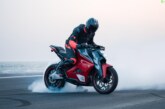
All you need to know about EV charging infrastructure in India-Power ratings, standards for AC & DC charging
The availability of electric vehicle charging infrastructure is very less in India which is becoming a big barrier to the adoption of electric vehicles due to the range and charging anxieties among the people. Therefore it is very important to discuss the EV charging infrastructure to witness the faster growth of electric vehicles. The EV charging requirements depend on the specifications of EV batteries as power must be supplied to the battery at the right voltage and current levels to permit charging. Read further to know more about EV charging infrastructure in India and its power ratings, Indian standards for AC and DC charging.
EV charging infrastructure in India
However, the battery capacity varies in different EV segments such as electric two-wheelers and three-wheelers, which are powered by low-voltage batteries. Whereas the electric four-wheelers will need more battery and voltage capacity.
According to the EV charging infrastructure handbook which was released by the NITI Aayog, a think tank of the Government of India, Electric light commercial vehicles (LCVs) will comprise both low-voltage and high-voltage vehicles, depending on their load-carrying capacity. It has given some battery specifications for the different EV segments which include the battery capacity and battery voltage for electric two-wheelers, three-wheelers(passengers, goods), electric cars ( 1st generation), electric cars (2nd generation).
| Vehicle segment | Battery capacity | Battery voltage |
| E-2W | 1.2-3.3 kWh | 48-72V |
| E-3W (P& G) | 3.6-8 kWh | 48-60V |
| E-cars (1st gen) | 21 kWh | 72V |
| E-cars (2nd gen) | 30-80 kWh | 350-500V |
According to the press release released recently by NITI Aayog, it said that due to the rising demand for goods and services, freight transport demand is expected to grow rapidly in the future. While freight transport is essential to economic development, it is plagued by high logistics costs and contributes to rising CO2 emissions and air pollution in cities.
India has the potential to
- Reduce its logistics cost by 4% of GDP
- Achieve 10 gigatonnes of cumulative CO2 emissions savings between 2020 and 2050
- Reduce nitrogen oxide (NOx) and particulate matter (PM) emissions by 35% and 28%, respectively, until 2050
The power ratings of the EVSE (electric vehicle supply equipment)
When it comes to charging an EV it does involves the direct current (DC) and alternate current (AC) power to the battery. an AC EVSE (electric vehicle supply equipment) the AC power is delivered to the onboard charger of the EV, which converts it to DC. A DC EVSE converts the power externally and supplies DC power directly to the battery, bypassing the onboard charger.
The power ratings of the EVSE (electric vehicle supply equipment):

EV charging by power level, with normal power charging going up to 22kW and high power charging going up to 200kW. While EVSEs with power ratings up to 500kW are globally available, they are largely applicable for heavy vehicles like buses and trucks.
The normal power AC charging is sufficient for electric two-wheelers, three-wheelers and e-cars. In India normal power DC charging is unique because the LEVs are commonly available and the use of low-voltage batteries in e-cars. The AC chargers with a maximum power rating of 7kW are much enough for the LEVs and cars which are having single-phase onboard chargers. Whereas the electric cars with larger onboard chargers will require Three-phase AC chargers, with a power rating
up to 22kW.
Similarly for high voltage electric cars with having a battery capacity of between 30-80kWh. The power level of DC chargers in the market ranges between 25kW and 60kW. However higher-powered DC chargers will be available in the near future.
The high power DC charging takes less time for e-cars, it requires a higher electricity supply with additional infrastructure. Whereas the normal power charging can be provided from the standard electricity distribution network.
Indian standards for AC and DC charging
AC charging
IS 17017 is the key EV charging standard in India for AC charging consists of three parts and six sections. It provides the basic features of all EV charging systems. Both AC and DC EVSE need to conform to the technical standards IS-17017-Parts 21 & 22. Indian standards for AC EVSEs have been approved for light EVs and e-cars for use in parking areas.
DC charging
IS-17017-Part-23 is for the DC charging stations, with a power output of 50kW to 200kW. More than this high power charging standards are required to cater to buses and other heavy vehicles. Recently, the BIS (Bureau of Indian Standards) has finalized the IS-17017-Part-25, which is specifically for providing low DC power of less than 7kW for light EVs.
When the Combined Charging System (CCS) standard is deployed, which can provide both AC and DC charging, communications will be as per the IS-15118 series.
The EV charging ecosystem comprises multiple components and processes-the provision of land and supply of electricity for EV charging, specification and installation of EV charging equipment, day-to-day operations and maintenance of EV charging facilities, and services allowing EV owners to use charging facilities. We will be discussing more regarding the classification of EV charging infrastructure, roles and responsibilities of the government stakeholders, charge point operators and e-mobility service providers, evaluating the EV charging demand, etc. in our next article.
Also read related article: Top 20 electric vehicles books you must read
If you are an EV manufacturer or EV Dealer or EV Supporter who want to share news related to electric vehicles on our website, please send an email to crm@electricvehicles.in
For the latest electric vehicles news, follow electricvehicles.in on Twitter,Instagram,Facebook and our YouTube Channels English, Hindi,TeluguandTamil







